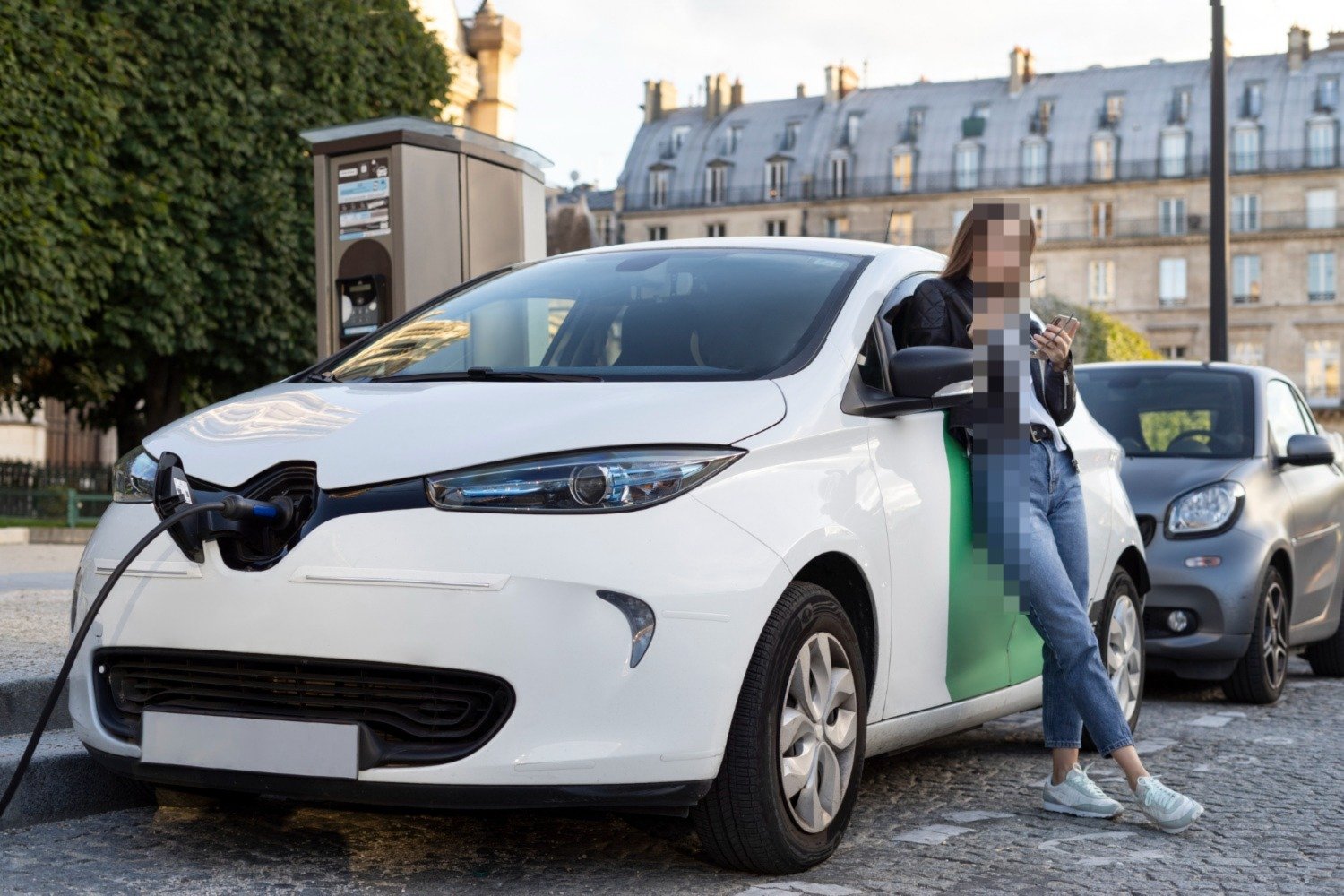Introduction: The Green Hype or the Real Deal?
As I sit here, coffee in hand, scrolling through headlines about the latest breakthroughs in sustainable tech, I can’t help but feel a mix of admiration and skepticism. Hybrid cars, hailed as a miracle of the modern auto industry, are everywhere, and companies are riding high on promises of “green driving.” From compact Toyota Prius models zipping through the streets to luxury hybrids from BMW and Porsche, it seems that everyone’s embracing this “half-electric” future. But the question I often hear—and find myself asking—is whether hybrids are the ultimate mobility solution. Are we feeding a myth, or is there substance behind the buzz?
Let’s take a drive down this road of hybrid exploration, putting aside the rose-tinted glasses and adding some good ol’ scrutiny. We’ll go through the strengths, the flaws, and everything in between, backed by statistics, anecdotes, and some surprising twists.
The Rise of Hybrid Cars: A Brief (and Entertaining) History
Hybrids are far from a new phenomenon. You might be surprised that they date back to the early 1900s! Yes, long before Teslas took over the world, there was an experimental hybrid vehicle by Ferdinand Porsche—yes, the Porsche—that combined a gas engine with electric motors. Fast forward almost a century, and it was the launch of the Toyota Prius in 1997 that truly popularized hybrid technology. Suddenly, everyone from Hollywood celebrities to your eco-conscious neighbor wanted one. In the U.S., it took off in the early 2000s, gaining traction as fuel prices soared and environmental concerns heightened.
While we’re here, let’s take a moment to acknowledge that hybrids became a cultural icon, forever linked with the stereotype of environmentally aware, perhaps slightly smug drivers—you know, the kind who insist on separating recycling at parties. Jokes aside, the hybrid has come a long way, capturing nearly 5.4% of the car market in recent years. According to the International Energy Agency, hybrid sales have continued to rise, with the market projected to grow even more in response to climate goals.
Why Hybrids Were the Perfect Middle Ground (Until They Weren’t)
Hybrids were a godsend when they hit the market. By combining a gasoline engine with an electric motor, they managed to reduce fuel consumption and emissions while providing more range than purely electric vehicles (EVs). This balance allowed drivers to enjoy the “green” benefits without fearing they’d be stranded if they couldn’t find a charging station. A solid choice, right?
But this middle-ground solution came with some compromises. For one, hybrids still rely on gasoline, meaning they aren’t the true zero-emission heroes that environmentalists dream of. Also, hybrids are not lightweight because they carry an internal combustion engine (ICE) and an electric battery. This extra weight leads to a lower overall efficiency than fully electric cars.
Technological Insights: How Hybrids Work and Why It Matters
Getting into the nuts and bolts, hybrids operate by switching between a gasoline engine and an electric motor, depending on speed, power needs, and battery levels. An onboard computer controls this mechanism, optimizing fuel efficiency. Here’s the interesting part: the battery recharges through regenerative braking. Whenever you hit the brakes, the energy that would otherwise be lost as heat is converted into electricity and stored in the battery.
But while this setup is genius in many ways, there’s a common gripe: battery life. Hybrid batteries degrade over time, especially in older models, leading to decreased fuel efficiency and even total battery replacement—a costly affair. According to some owners, a replacement can cost anywhere from $1,000 to $6,000. Ouch. This is where specialists like Hybrid Battery Service step in, offering affordable solutions to extend battery life and improve performance.
Hybrid Performance vs. Fully Electric Vehicles: A Global Comparison
Now, let’s look at some cold, hard statistics. According to recent studies, hybrids reduce fuel consumption by an average of 20-35% compared to traditional gas-powered vehicles. However, a fully electric vehicle can cut this figure down to zero. The catch? EVs require a robust charging infrastructure, which is still in development across much of the world. EVs have become the preferred choice in countries like Norway and the Netherlands, where charging stations are plentiful, making hybrids somewhat obsolete. In contrast, hybrids are still seen as a more practical, if temporary, solution in countries with sparse charging networks.
Toyota, one of the largest hybrid producers, sold 2.6 million hybrid cars in 2020 alone, while the global EV market continues to grow at an average annual rate of 21.7%. However, these numbers reveal a geographic divide: EVs are favored in regions with supportive infrastructure, whereas hybrids still reign in areas with limited charging options.
Charging Challenges: Why Hybrid Batteries Aren’t Always a Smooth Ride
Regarding infrastructure, here’s a less-talked-about drawback of hybrids: battery charging limitations. Unlike EVs, hybrids primarily rely on gasoline; they don’t need external charging, which can be both an advantage and a disadvantage. The lack of charging dependency means hybrids are more adaptable in rural or infrastructure-poor areas. However, it also means that hybrid drivers miss out on some of the cost savings associated with home EV charging.
Furthermore, hybrid owners still face maintenance and repair challenges. Battery degradation is gradual, so routine maintenance and battery checks are essential. Services like Hybrid Battery Service offer specialized support. Still, it’s worth mentioning that not all mechanics are equally experienced with hybrid technology, which can lead to unexpected repair bills if not carefully managed.
Environmental Impact: Are Hybrids Really “Green”?
Let’s address the elephant in the room: are hybrids genuinely eco-friendly or just a band-aid on a much larger environmental wound? Hybrids reduce emissions compared to gasoline cars but still emit pollutants, unlike fully electric cars. To add to the complexity, hybrid batteries require rare earth metals like lithium and cobalt, mined in ways that can be environmentally damaging and ethically questionable.
Reports from the United Nations have highlighted the environmental cost of battery production, especially in countries where mining practices are less regulated. Conversely, hybrids’ longevity and fuel efficiency can offset some of these negative impacts. For example, the average hybrid car emits 30% less CO₂ than a gas-powered car over its lifetime. However, compared to EVs, hybrids still lag on emissions, particularly as green energy sources for charging continue to expand.
Part II: The Hybrid Economy – Is It Worth the Investment?
One of the most common questions about hybrids revolves around cost: Are hybrids worth the investment? On the surface, it might seem like a no-brainer. After all, hybrids save on fuel costs, which is enticing given the fluctuations in gas prices. However, the upfront cost of a hybrid vehicle can be significantly higher than that of a traditional gasoline vehicle, and some EVs are even lower-priced. For instance, the Toyota Prius: while it’s praised for fuel efficiency, it costs several thousand dollars more than similar gasoline-powered cars. For some, these extra costs are worth it for the fuel savings and environmental impact, but others may find it hard to justify.
This is where statistics get interesting. According to data from AAA, hybrid drivers save around $500 to $700 annually on fuel compared to drivers of gas-only cars. Over the average lifespan of a vehicle, this amounts to about $4,000 in savings. However, potential battery replacements can cost thousands, and the savings start to diminish, especially in older hybrid models. For example, a study from J.D. Power found that after 100,000 miles, hybrid battery efficiency could drop by 20% or more, making it increasingly challenging to keep those fuel savings intact without proper maintenance.
Thankfully, specialized services like Hybrid Battery Service allow for extending battery life and improving performance, which can save owners from costly replacements and make hybrids more economical in the long run.
A Hybrid World: How Big Companies and Countries Are Embracing (or Rejecting) the Hybrid Model
Let’s take a moment to zoom out and look at the global picture. Some of the biggest names in the auto industry—Toyota, Ford, Honda—have committed billions to hybrid research and development, with Toyota leading the pack. Interestingly, while Toyota is one of the most prominent hybrid champions, it has been slower to embrace fully electric cars, which has puzzled some industry analysts. Their reasoning? Toyota believes that hybrids offer a more practical solution for reducing emissions on a global scale, especially in regions where EV infrastructure is still underdeveloped.
On the other hand, European automakers like Volvo and Volkswagen are taking a different route, largely abandoning hybrids in favor of fully electric options. Volvo has announced its goal of becoming a fully electric car company by 2030, supported by the European Union’s aggressive emissions reduction targets. This decision reflects a growing European consensus that hybrids are merely a “halfway” solution that might delay the adoption of pure electric mobility. This split highlights a fascinating tension between two philosophies: one that sees hybrids as a necessary bridge to a cleaner future and another that views them as an outdated stopgap.
When Hybrids Get It Right – And When They Don’t
Without an honest look at their performance quirks, no discussion on hybrids would be complete. In day-to-day driving, hybrids shine in city environments, where stop-and-go traffic allows the electric motor to take the lead, saving fuel and reducing emissions. However, hybrids often switch to gasoline on highways, considerably reducing fuel savings. In colder climates, hybrids also struggle, as low temperatures affect battery performance and may increase reliance on the gas engine.
There are also reports of hybrids underperforming in terms of acceleration and horsepower. For drivers accustomed to the zippy response of a gas engine or the instant torque of an EV, hybrids may feel sluggish. Automakers like Toyota have tried to address this “compromise” with mixed success by developing more powerful hybrid models like the Toyota RAV4 Hybrid and the Honda Accord Hybrid.
One crucial takeaway is that hybrids aren’t ideal for all drivers. If you live in a city with mild weather and frequent traffic, hybrids can be an excellent choice. But if you commute long distances on highways or live in a cold region, a hybrid might not provide the same level of efficiency or satisfaction.
The Future of Hybrid Technology: Where Do We Go from Here?
With all this in mind, it’s natural to wonder what the future holds for hybrids. As battery technology continues to evolve, the efficiency and performance of hybrids are likely to improve. Solid-state batteries, for example, promise longer life spans, higher energy densities, and faster charging times, which could benefit both hybrids and EVs. Automakers are investing heavily in this technology, with companies like Toyota planning to release a solid-state battery hybrid by the decade’s end.
However, some experts argue that hybrids will be phased out as EV infrastructure improves and battery technology becomes cheaper. Norway, a leader in sustainable transport, plans to ban sales of new gas and hybrid cars by 2025, signaling a strong preference for all-electric vehicles. This trend is echoed by other countries that have set ambitious goals to cut carbon emissions, putting pressure on hybrid technology to keep up or risk being left behind.
Why the Hybrid Debate Matters – And How It Affects You
The hybrid vs. electric debate is about more than personal preference; it reflects our global approach to sustainability. If hybrids represent a “compromise,” then the question becomes whether we’re content with half-measures or ready to commit fully to greener technology. It’s also a question of accessibility. Not everyone has access to charging stations, and not every country has the infrastructure to support a full-scale switch to EVs. In this context, hybrids provide a stepping stone, allowing people to reduce their carbon footprint without waiting for infrastructure to catch up.
This debate represents an opportunity to make a difference for businesses like Hybrid Battery Service. By helping hybrid owners maintain and extend the life of their batteries, they’re enabling people to make greener choices without the financial strain of constant repairs or replacements. In a world where environmental responsibility often comes at a premium, services like these make sustainable driving more accessible.
Final Thoughts: Choosing Your Green Path Forward
As we wrap up, it’s clear that hybrids are neither the perfect solution nor a mere gimmick. They represent a stage in our evolving relationship with mobility, full of potential and limitations. For some drivers, they offer the best of both worlds: reduced emissions and no dependence on charging stations. The compromises may outweigh the benefits for others, making all-electric vehicles or even efficient gas cars a better choice.
In a world grappling with climate change, every decision counts. If you’re considering a hybrid, know there are resources like Hybrid Battery Service to help you maximize that choice. Their services can make hybrid ownership more economical and sustainable, allowing you to get the most out of your vehicle for years.
So, the next time you’re at a crossroads, consider your mobility choice and environmental commitment. Are hybrids the future? Maybe not the final destination, but they’re part of the journey.









